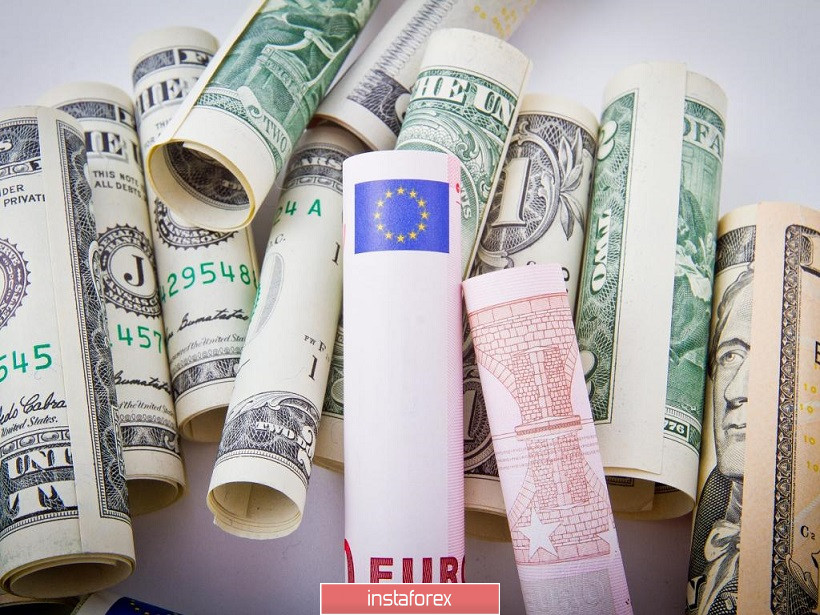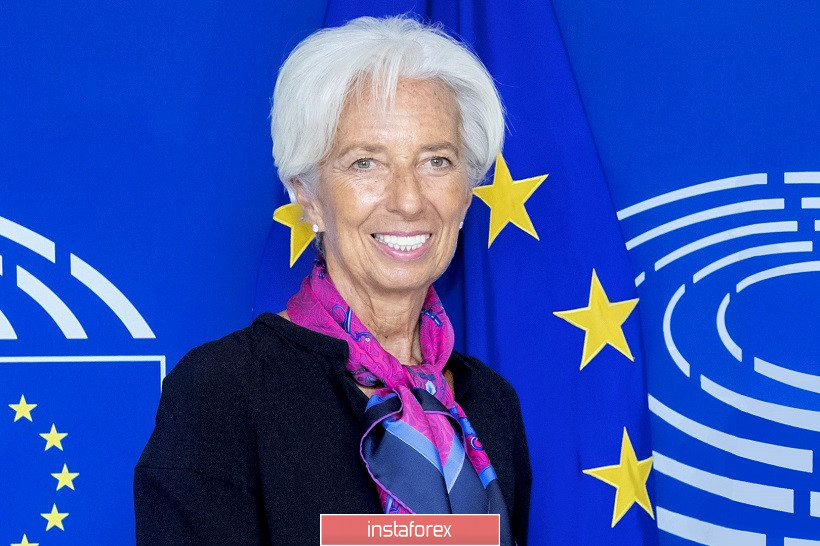The euro-dollar pair completed the previous trading week on a minor note, dropping to the middle of the 10th figure. However, given the unexpectedly strong Nonfarms, the dollar showed a restrained reaction, under other circumstances, the EUR / USD pair would be at least 100 points lower, testing the lower border of the price range 1.0970-1.1090. But the US currency is still vulnerable, despite the strong data on the US labor market. The bears could not go beyond the boundaries of the indicated corridor (like the bulls), after which the pair got stuck in a flat, waiting for the next information drivers. Fortunately, there will be plenty of them this week.

All the upcoming major events for the EUR / USD pair can be conditionally divided into three categories: macroeconomic reports, central bank verdicts, and geopolitical decisions which are the US-China negotiations and parliamentary elections in Britain, respectively.
If we talk about macroeconomic statistics, we will have American inflation in the foreground. According to preliminary forecasts, inflation will show contradictory dynamics. The total inflation should increase slightly by 2.0% annually while the indicator will slightly decrease by 0.2% monthly. Core inflation should completely repeat the trajectory of October with 0.2% monthly and a 2.3% yearly. For dollar bulls, it is important that these indicators come out at least at the forecast level, that is, if the release is in the "red zone", the greenback will again be under pressure, especially on the eve of the Fed meeting that will take place on the same day.
The data on retail sales is also important for the dollar and the release of which is scheduled on Friday, December 13. In September, the overall indicator fell into the negative region, for the first time since March, but the October figures showed positive dynamics where both the total retail trade and excluding car sales went above zero, this is 0.3 and 0.2%, respectively. Meanwhile, in November, the indicator can confirm positive dynamics and according to forecasts, the index will again appear in positive territory supporting the dollar.
The European currency will respond particularly to its statistics and tomorrow all attention will be focused on the mood indexes in the business environment from the ZEW Institute. Positive dynamics are expected both in Germany and the eurozone as a whole because indicators should leave the negative area after a seven-month stay in it.
But it is worth recognizing that macroeconomic reports will play the role of the second violin this week. The vector of the pair's movement largely depends on the rhetoric of the heads of the ECB and the Fed. In the coming days, the last meeting of regulators for this year will take place, where representatives from the Central Bank will summarize the outgoing year while identifying the contours of future prospects.
First, the Federal Reserve will announce its verdict and on Wednesday we will find out the results of the December meeting. The market is 100% sure that the American regulator will leave the interest rate unchanged, the intrigue lies only in the tonality of the accompanying rhetoric. Most experts interviewed by Bloomberg believe that the regulator will take a dual position, on one hand, Fed members will note the successes of the American economy (GDP growth in the third quarter, Nonfarm), but at the same time they will recall the continuing risks - especially in light of extremely weak data in the manufacturing sector and we are talking about the ISM index in particular. Therefore, the regulator will probably not hint at further easing of monetary policy, but at the same time it will note that it "keeps gunpowder dry,"
On Thursday, the European Central Bank will also hold its final meeting for this year. As many analysts believe, the rhetoric of Christine Lagarde will be controversial, because not so long ago in early December, she spoke in the European Parliament where she assessed the current situation. On the one hand, she noted the weak growth of the eurozone economy in the third quarter and the explaining this by the negative influence of global factors, while recognizing the effectiveness of the ECB's adaptive policy. Soft policy, according to her, will remain "for a long time," due to the weak growth of key indicators. On the other hand, she acknowledged the presence of side effects of the super-soft policy of the European Central Bank. Lagarde also pointed to increased consumption in the eurozone, a stronger labor market, and higher wages. Most likely, the overall outcome of the December meeting of the ECB will be the same. The European regulator is unlikely to announce an expansion of incentives, especially in the light of the existing split in the Central Bank, but it will not exclude possible steps in this direction if the situation worsens. Such a scenario is fully included in prices, so its implementation will not put significant pressure on the euro.

The forefront of fundamental events are trade negotiations between the United States and China. Let me remind you that on December 15, Washington may impose additional duties on goods worth 160 billion dollars. It became known that China plans to abandon import duties on part of the supply of soybeans and pork from the United States. Traders interpreted this step as a signal that Beijing is ready to compromise. But today it is not known whether the White House is ready to accept such concessions, or whether it will insist on more substantial curtsies from the PRC.
In general, the current trading week will be the most crowded week of December in anticipation of Christmas and New Year's suspended animation in the foreign exchange market.





















